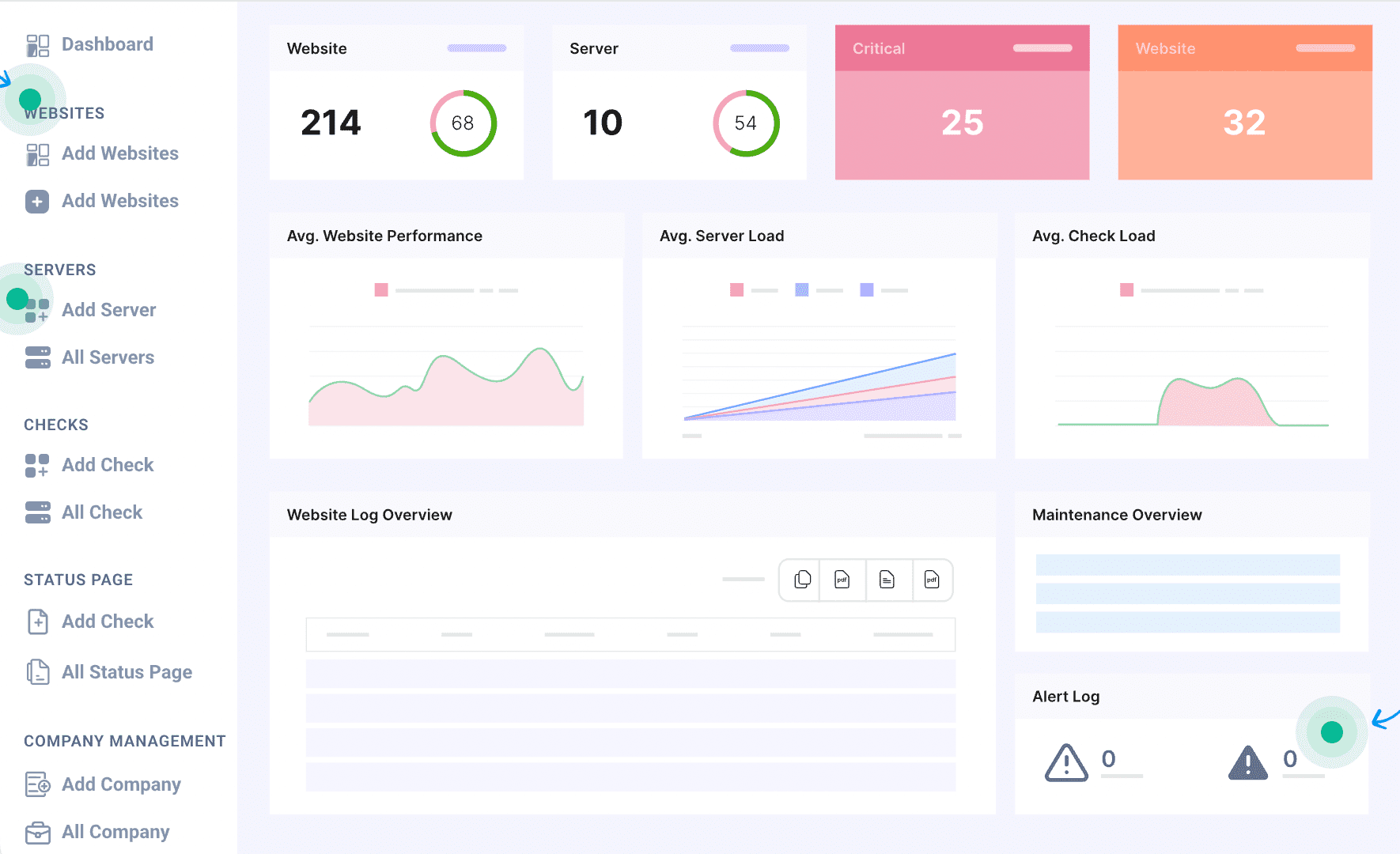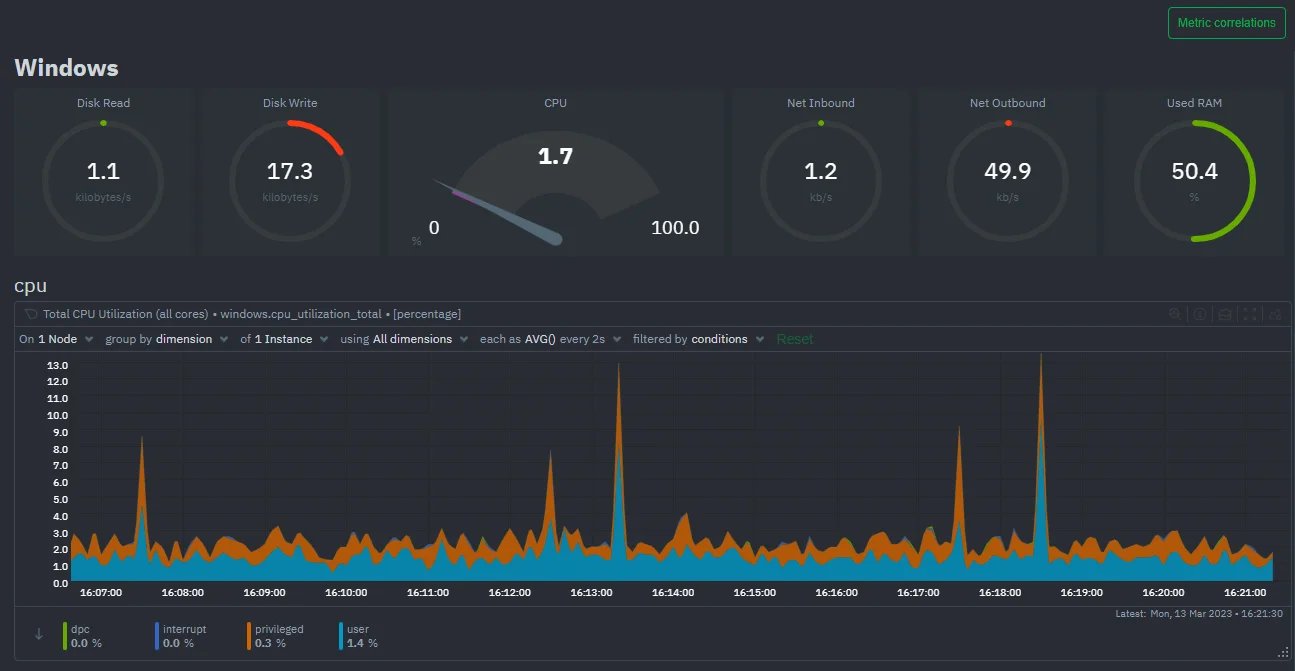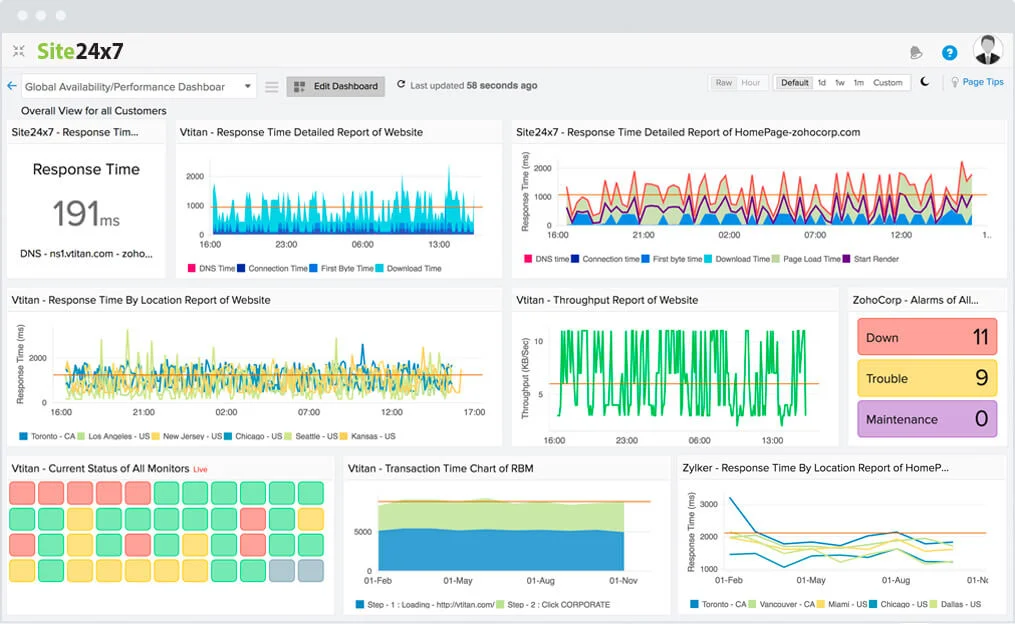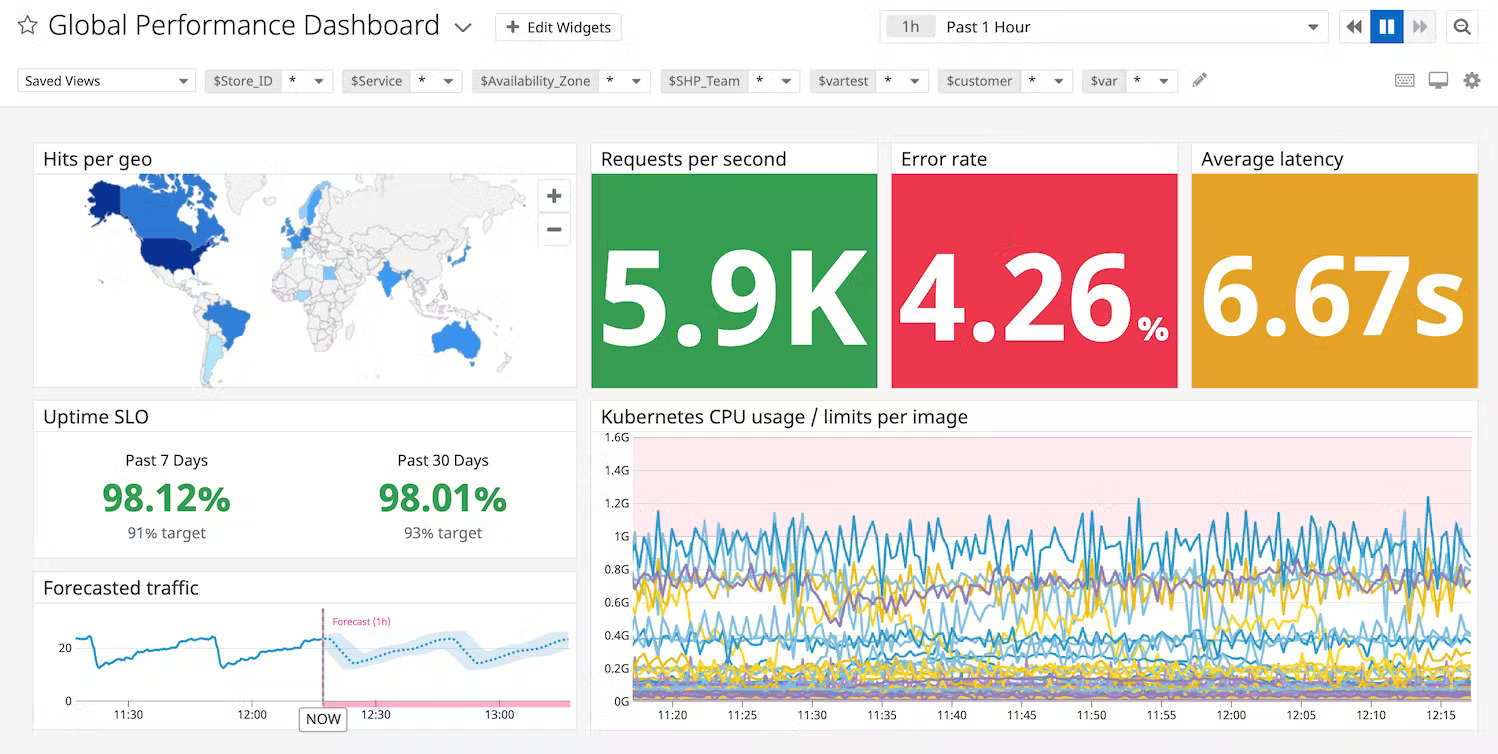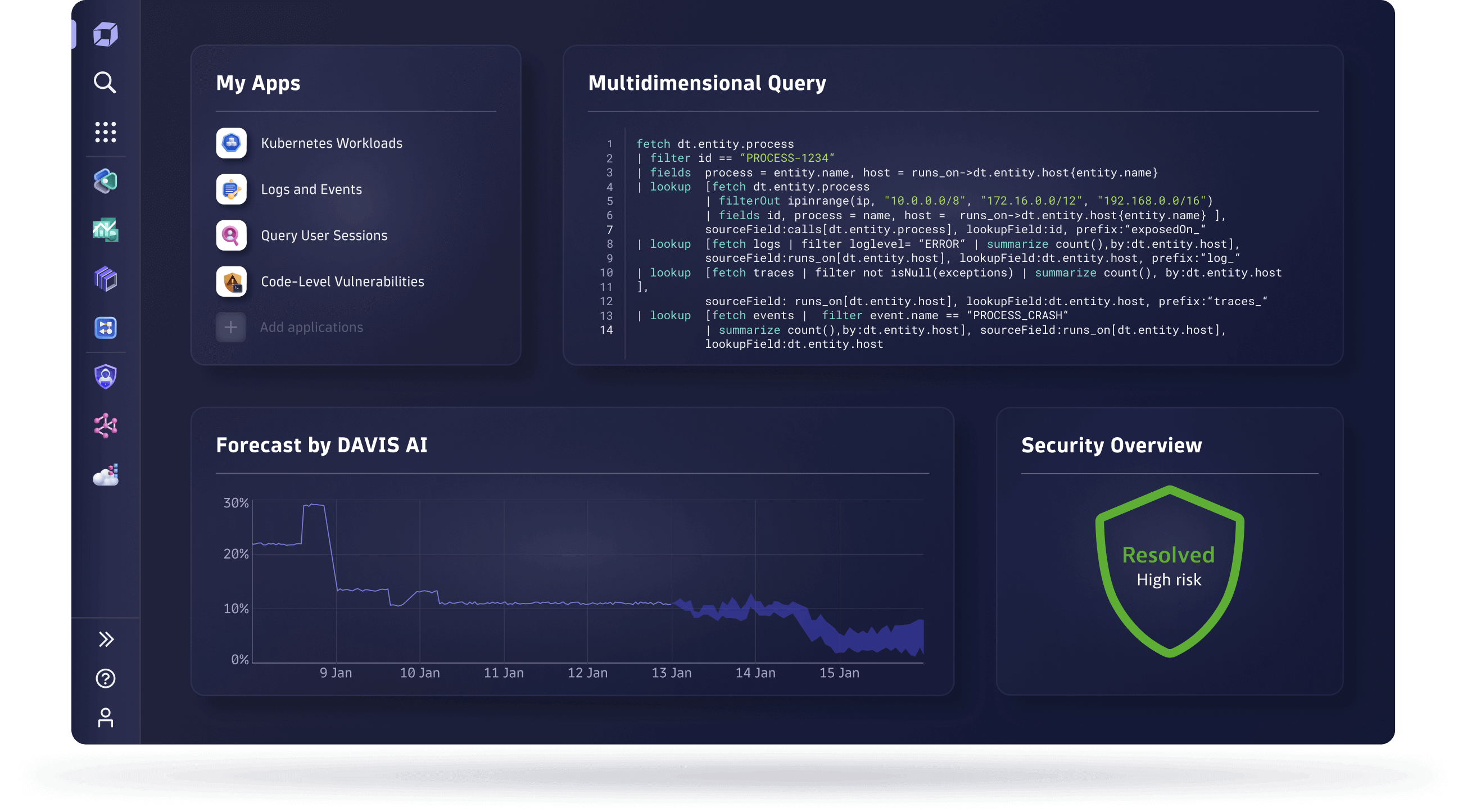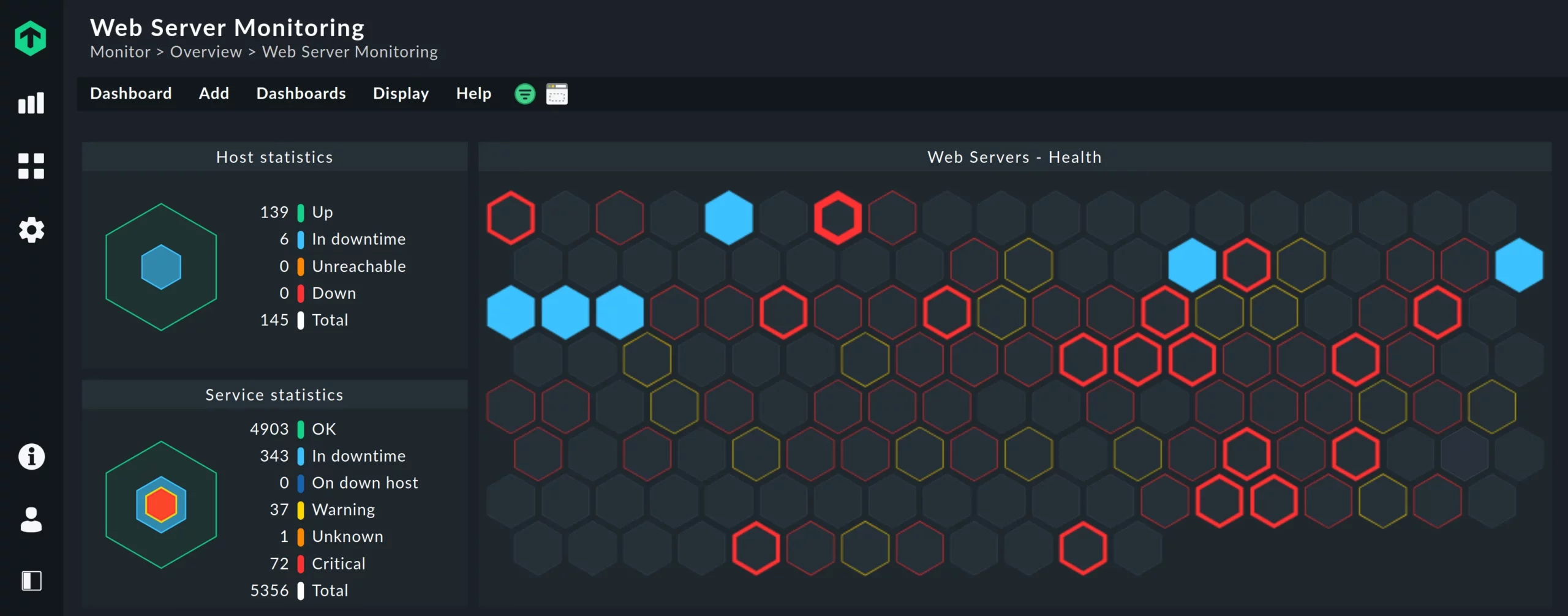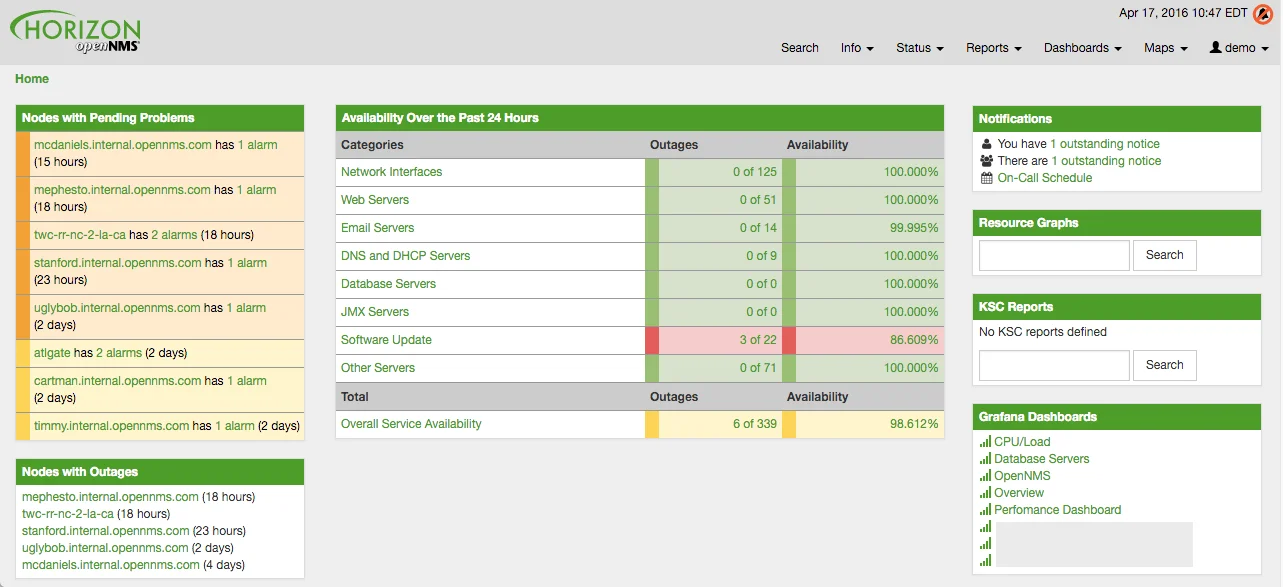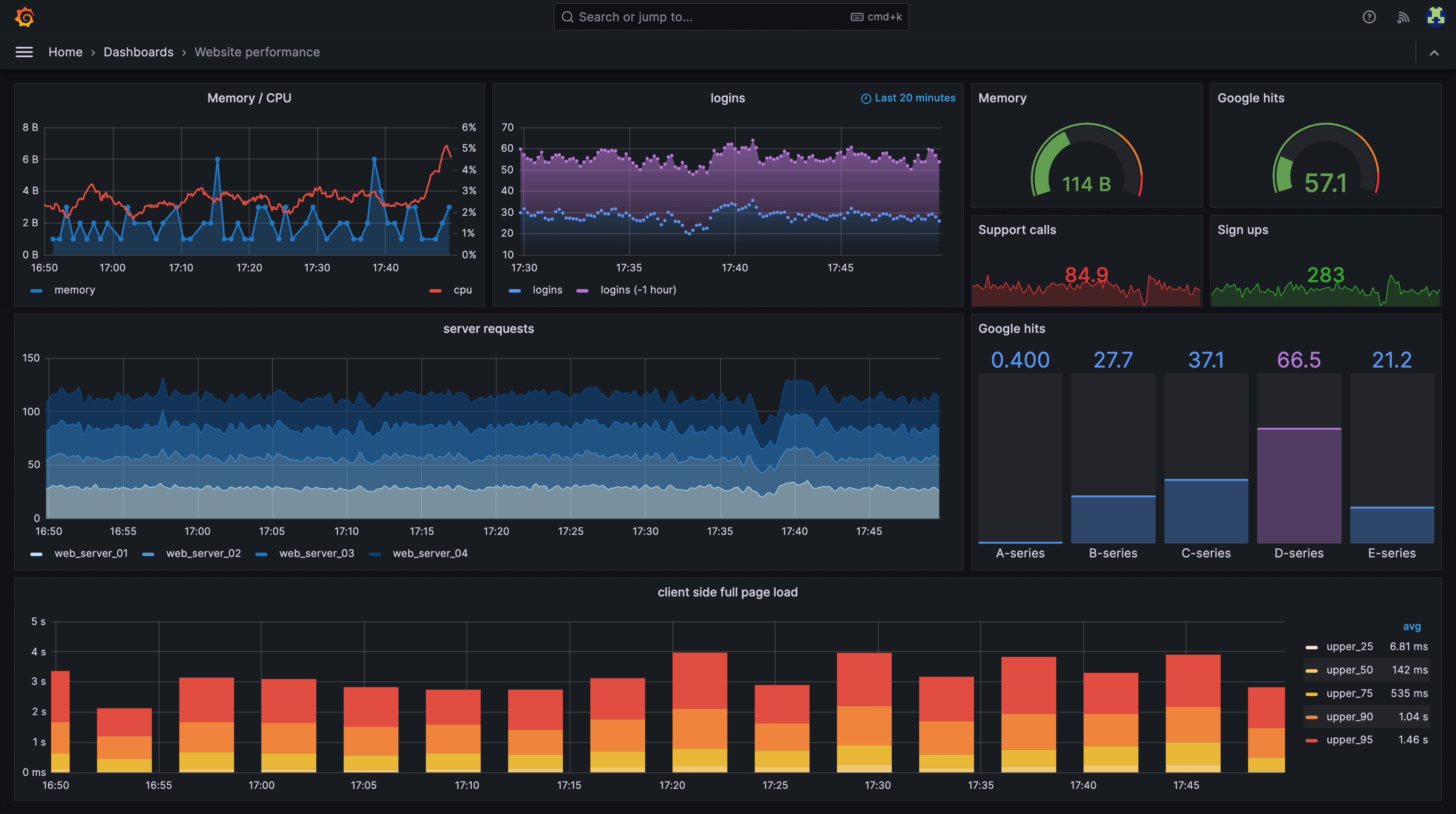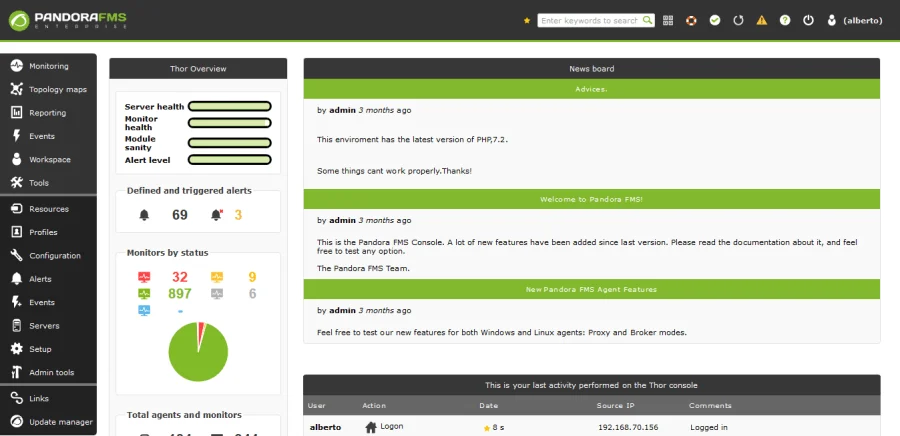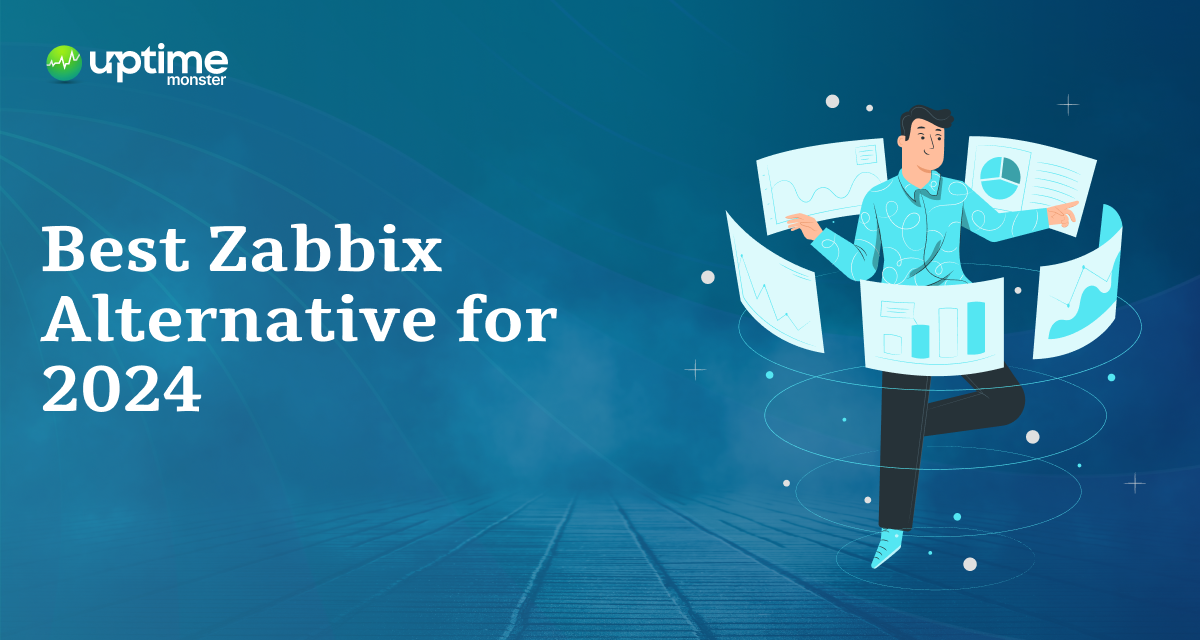
15 Best Zabbix Alternative for 2024
What is Zabbix?
Zabbix is a powerful, enterprise-grade monitoring solution that keeps a watchful eye on your IT infrastructure, ensuring everything runs smoothly and efficiently. Whether you’re a small business or a large organization, Zabbix provides comprehensive monitoring capabilities to safeguard your critical systems and applications.
Utilizing an extensive range of data collection methods, including JMX, SNMP, WMI, IPMI, and customizable scripts, this software provides a precision-focused approach to network monitoring. It can adapt diverse monitoring requirements, whether in on-premise or cloud environments, catering to networks of varying complexities.
Zabbix actively monitors and generates reports on critical performance metrics such as network utilization, CPU load, and disk space consumption. It empowers users to gather, analyze, visualize, and receive notifications about potential issues.
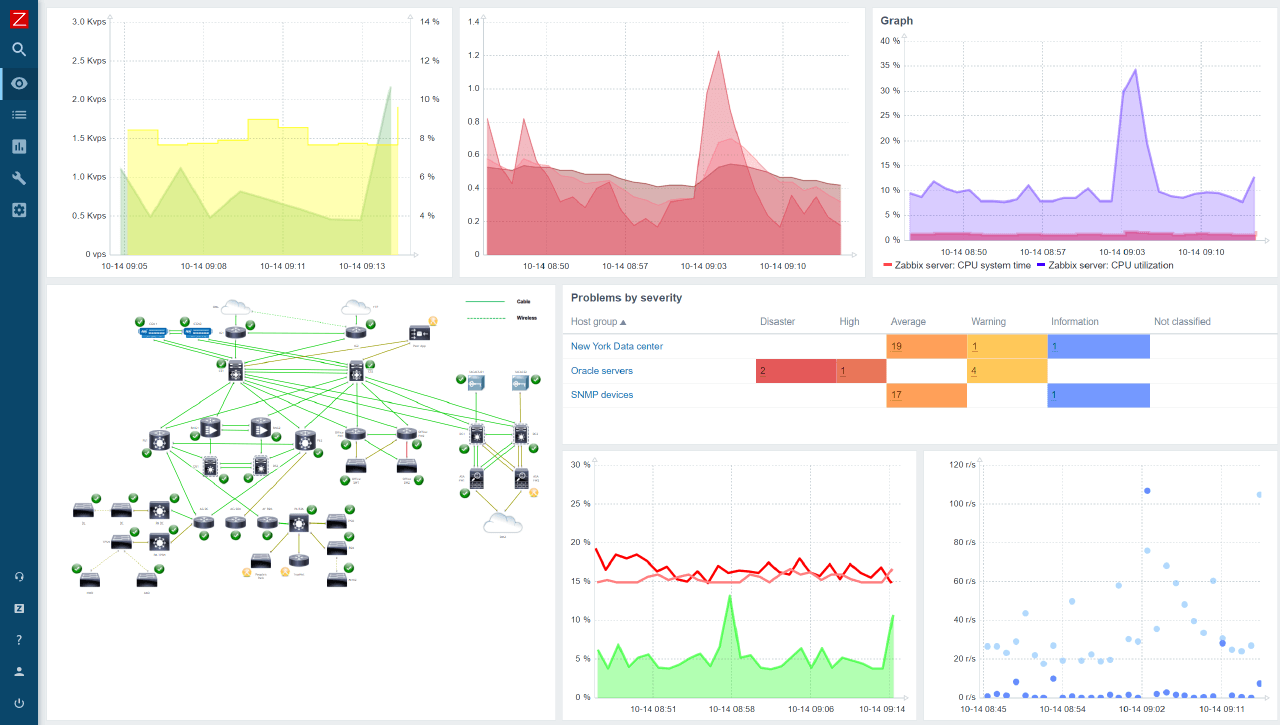
Limitations and Challenges of Zabbix
- Steeper learning curve
- GUI could be more intuitive
- Requires in-house expertise for setup and maintenance
- requires a significant amount of system resources compared to other monitoring tools
- Without proper tuning, the database can rapidly expand
- Tuning a database can be a hard task for some users
Criteria for selecting the best alternative to Zabbix include:
- Automated Network Discovery System: Ensure the alternative has an automated network discovery system to identify and integrate new devices seamlessly.
- Automatic Inventory and Network Map Creation: Look for a solution that provides automatic inventory management and creates clear network maps for better visualization.
- Constant Updates on Infrastructure: The chosen alternative should offer real-time updates on the status and performance of the entire infrastructure.
- Device Status Tracking: The ability to track and monitor the status of devices in real time is crucial for effective network management.
- Alerts for Evolving Problems: The alternative should have a robust alerting system that notifies administrators of emerging issues promptly.
- Free Tool or Trial Period: Consider alternatives that offer a free version or a trial period for a no-obligation assessment before committing to a purchase.
- Value for Money: Assess the overall value for money by comparing features, performance, and support, ensuring it represents a compelling option compared to Zabbix.
Best Alternative for Zabbix
UptimeMonster
Reliable website and server monitoring service from the cloud to monitor your web availability, performance, and security. The tool will give you a 24/7 website monitoring service that will Monitor the availability of your website, APIs, and business-critical web transactions with powerful synthetic monitoring and testing tools.
It collects, correlates, and monitors servers alongside data from the rest of your stack. UptimeMonster server monitoring allows you to visualize, analyze, and track down different query metrics happening on your server so that you can prevent them before anything goes wrong.
Monitor your network performance like IP, DNS, Service port, Application, and others using the check monitoring tools. It will enable you to understand the network behavior and track NetFlow.
UptimeMonster check monitoring service will give you full control over your network. The check monitoring types are as follows
- TCP (Transmission Control Protocol)
- ICMP PING (Internet Control Message Protocol)
- IP Blacklist
- UDP (User Datagram Protocol)
- DNS (Domain Name Server)
- Application Monitoring
With a status page, you can share your monitoring activities and incidents with customers. You can easily make our status page public or private. You can highly customize your status page and share it with your customers to reduce the number of customer support tickets.
Using the status page you can easily gain trust from your customers. The alert notification easily notifies your customers about any incidents so that they can take necessary steps to prevent the issue. So that they will always be prepared and stay tuned.
Create and customize intricate policies for the escalation of incidents by taking into consideration various factors, including the passage of time, the availability of your team, and the source or origin of the incident.
Key Features
- Reliable Website and Server Monitoring
- Network Performance Monitoring
- Check Monitoring Types
- Status Page Customization
- Alert Notifications
- Incident Escalation Policies
- Incident Timeline
- SSL Expiration Monitoring
- Search String Monitoring.
Pros
- Reliable Uptime Monitoring
- Easy Setup and Configuration:
- Cost-Efficiency
- Customer Support:
- Accurate Reporting:
- User-Friendly Interface
- Customizable Alerts
- Status Page
- Escalation policies
- Incident Timeline Report
Cons
According to user reviews, UptimeMonster doesn’t exhibit any notable drawbacks. However, a few users have highlighted certain feature limitations in the free plan offering. These limitations might include restricted access to certain functionalities or reduced capabilities compared to the premium plans. Despite this, the overall consensus from users is overwhelmingly positive regarding the platform’s performance and functionality.
Our perspective on this matter revolves around the notion that smaller teams might not necessitate the utilization of numerous advanced features. Therefore, it appears reasonable to curtail access to certain functionalities, considering that smaller teams might not require or fully utilize these advanced features. This approach ensures a streamlined and more focused user experience, optimizing the platform’s usability for smaller teams with specific needs.
Pricing
- Standard plan at $7/month with 30 monitors and 2-minute interval
- Professional plan at $19/month with 50 monitors and 1-minute interval
- Business plan at $99/month with 100 monitors and 25-second interval
Atera
Atera is a cloud-based platform that brings together a comprehensive suite of IT management tools under one roof. It caters specifically to Managed Service Providers (MSPs) and internal IT teams, aiming to streamline operations, boost efficiency, and deliver exceptional customer service.
This cloud-based solution offers a unified suite of tools for remote monitoring and management (RMM), professional services automation (PSA), and remote access. Atera streamlines IT workflows, providing real-time insights into network performance, security, and device health. With features like automated ticketing, patch management, and remote support, Atera empowers IT professionals to efficiently manage and optimize their clients’ systems, ensuring proactive and responsive services.
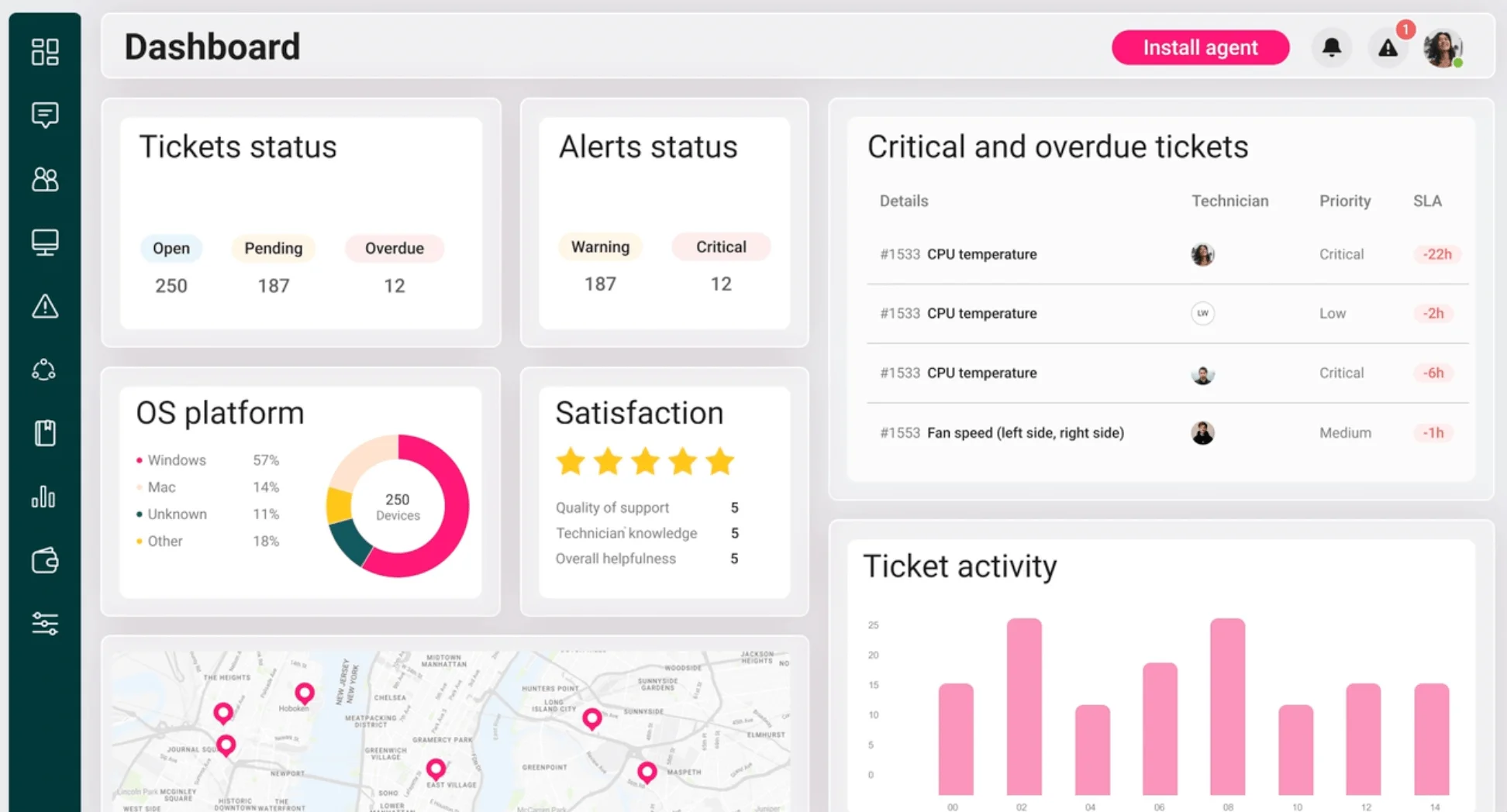
Key Features
- Remote Monitoring and Management (RMM)
- Professional Services Automation (PSA)
- Remote Access
- Network Monitoring
- Automated Ticketing
- Patch Management
- Proactive Alerts and Notifications
- Backup and Recovery
Pros
- Multi-tenanted architecture for versatile usage
- Empowers each support technician to manage multiple clients efficiently
- Incorporates automated patch management for streamlined updates
- Features remote access and remote desktop utilities for enhanced accessibility
Cons
- Mobile app functionality is not as robust as the web version
- Occasional delays in ticket notifications
- The difficult learning curve for beginner
- Network topology mapping requires an additional cost.
Pricing
- The Basic plan starts at $149/ month
- The Expert plan starts at $169/ month
- The Master plan starts at $199/ month
Paessler PRTG Network Monitoring
PRTG network monitoring solution is designed to track network up/down status, traffic, and usage. Key features encompass availability, performance, and bandwidth monitoring through SNMP, WMI, packet sniffing, and NetFlow. Instant alerts, comprehensive reporting, and failover clustering are included.
PRTG Network Monitor operates as an agentless solution, eliminating the need for agent installations on target devices and applications. Instead, it utilizes network protocols like SNMP, WMI, NetFlow, or SSH for efficient and swift monitoring. This approach reduces the burden and ensures a seamless monitoring experience.
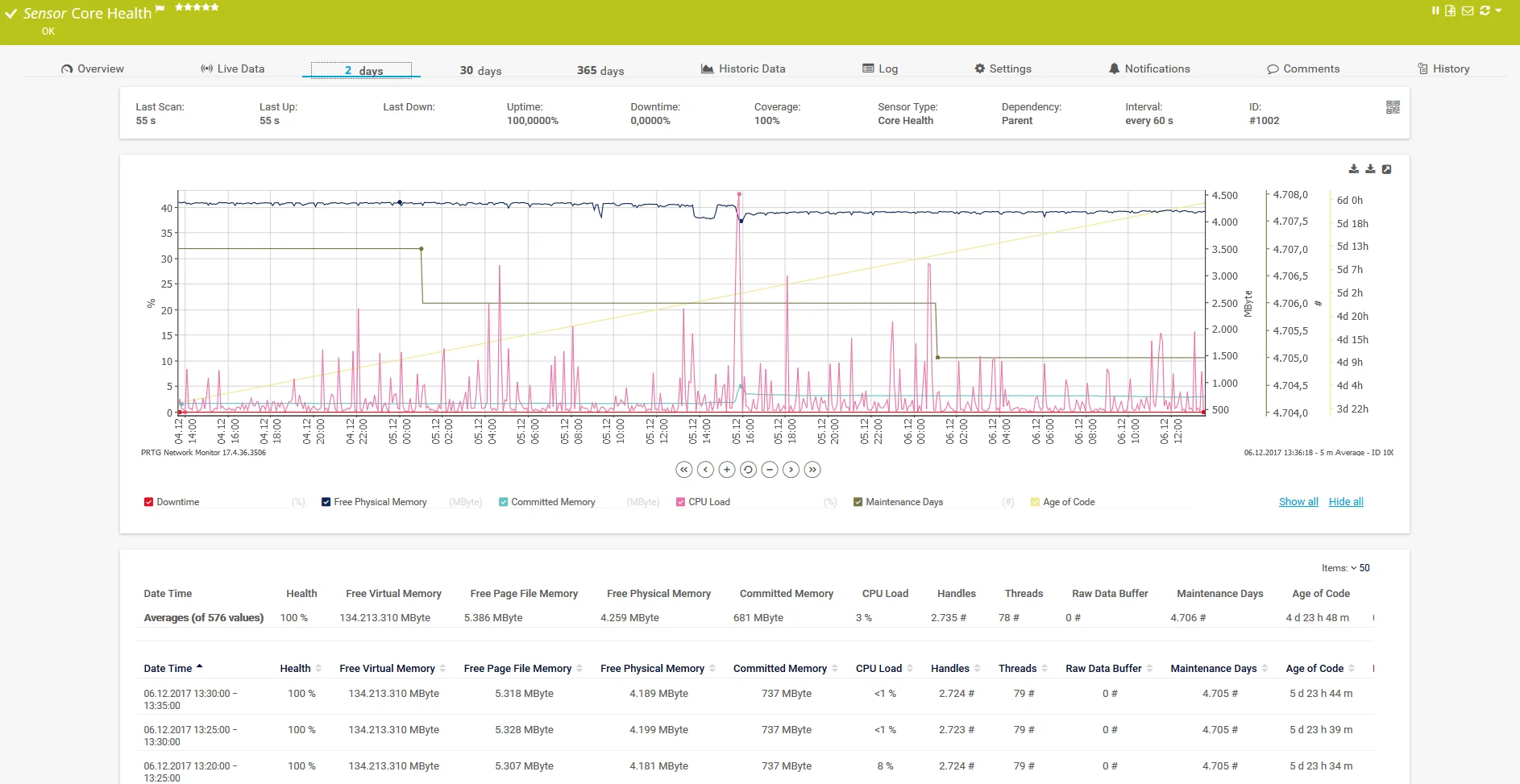
Key Features
- In-depth Reporting
- Maps and Dashboards
- Flexible Alerting
- Distributed Monitoring
- Cluster Failover Solution
- Multiple User Interfaces
Pros
- Agentless Monitoring
- Varied Network Protocols
- Customizable package
- Traffic management and comprehensive monitoring of network devices.
- Enables full-stack monitoring for a holistic view of the system.
Cons
- No patch manager
- Limited historical data in the free version
- It’s Windows base especially so managing too many Linux machines causes issues
- Licensing can be tricky as it is not based on devices but rather on sensors. Currently, each sensor, such as an interface, is counted as a sensor license.
- Maps are difficult to make
Nagios
Nagios is an open-source and commercial monitoring tool used by businesses of all sizes to keep their IT infrastructure up and running. It monitors everything from servers and networks to applications and services, alerting you to potential problems before they become critical.
Nagios XI diligently monitors various elements of your infrastructure, encompassing applications, operating systems, network architecture, network protocols, services, and system metrics. Its extensive library of hundreds of third-party addons empowers you to monitor virtually any internal or external program, service, or system with flexibility and adaptability.
Nagios Fusion unites dispersed Nagios XI and Core servers, granting panoramic network oversight and simplifying issue resolution across vast networks. Centralize diverse Nagios deployments with Fusion, boosting scalability and resolving geographically scattered network issues effortlessly.
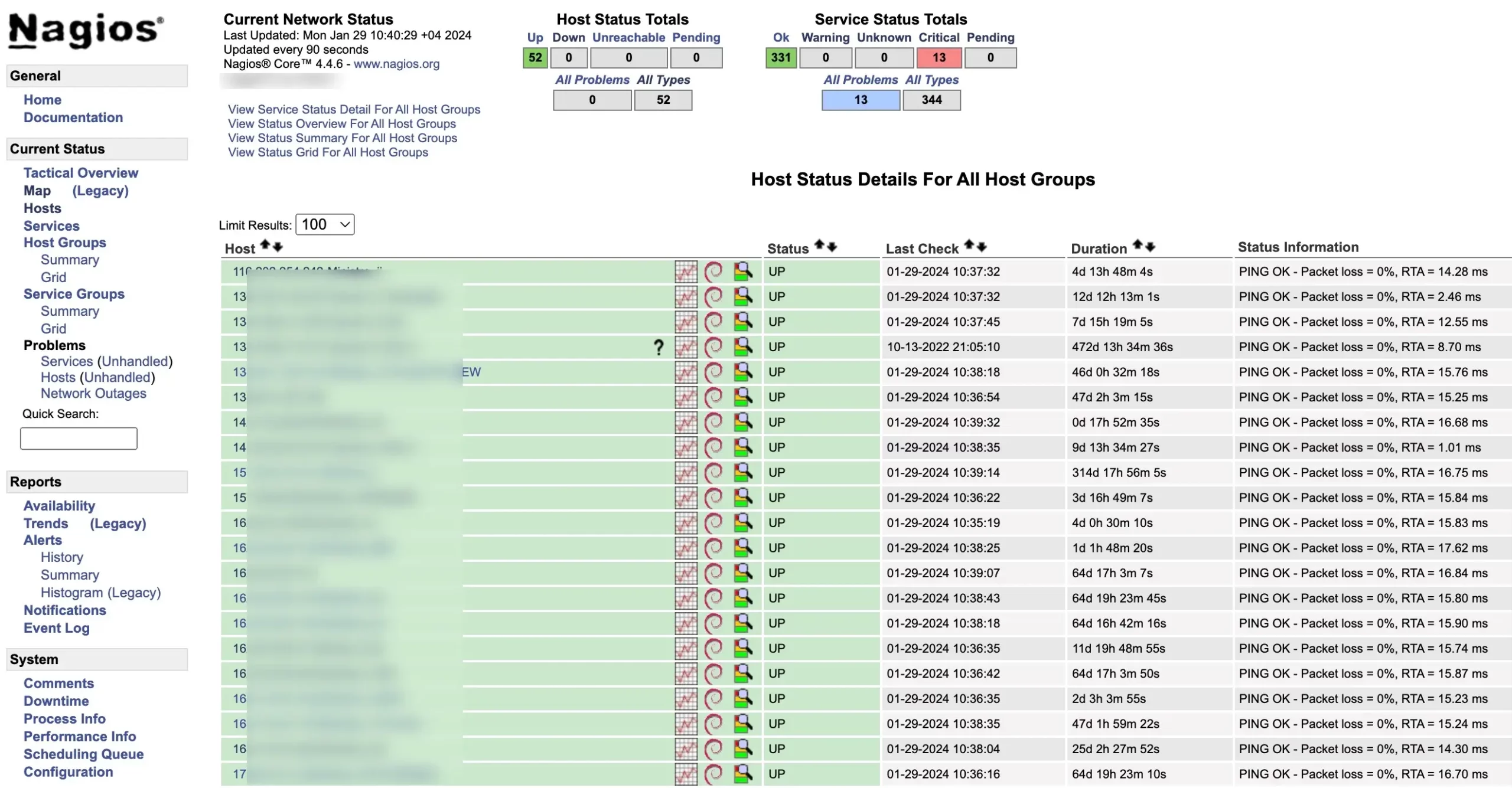
Key Features:
- Monitoring of various IT components: Nagios can monitor servers, networks, applications, services, and more. It supports various protocols like SNMP, Ping, SSH, and WMI to collect data from different devices and systems.
- Customizable alerts and notifications: You can define custom alerts and notifications for different types of issues. Nagios can send alerts via email, SMS, instant messaging, or other channels to ensure the right people are notified promptly.
- Reporting and data analysis: Nagios provides comprehensive reports and data analysis to help you track trends, identify potential issues, and improve the performance of your IT infrastructure.
- Flexible and scalable: Nagios is highly flexible and scalable. You can start with a basic setup and add more features and functionality as your needs grow.
- Open-source and commercial options: Nagios Core is an open-source solution, while Nagios XI is a commercial version with additional features and enterprise-grade support.
Pros
- Highly customizable: Nagios can be customized to meet the specific needs of your IT infrastructure.
- Wide range of features: Nagios offers a wide range of features for monitoring different aspects of your IT environment.
- Powerful alerting system: Nagios’ alerting system ensures that you are notified of potential problems promptly.
- Active community: Nagios has a large and active community that provides support and helps you troubleshoot any issues.
- Cost-effective: Nagios Core is free to use, and Nagios XI is relatively affordable compared to other monitoring solutions
- Integration Capabilities: Nagios seamlessly integrates with various third-party tools and services, fostering compatibility and expanding its functionality according to organizational needs.
Cons
- Can be complex to set up: Nagios can be complex to set up for beginners, especially the open-source version.
- Requires technical expertise: Using and maintaining Nagios effectively requires some technical expertise.
- Limited scalability for large enterprises: The open-source version of Nagios may not be scalable enough for large enterprises.
Pricing
- The initial cost for Nagios XI begins at $1,995 per instance, billed on an annual basis.
Netdata
Netdata collects metrics every second and displays them in visually appealing, low-latency dashboards. It is crafted to operate seamlessly across your physical and virtual servers, cloud setups, Kubernetes clusters, as well as edge/IoT devices. This allows comprehensive monitoring of your systems, containers, and applications.
Its design incorporates infinite scalability, offering a flexible and highly modular solution. With a user-friendly interface, it is immediately available for troubleshooting without the need for prior knowledge or preparation. Moreover, Netdata seamlessly integrates into existing monitoring toolchains, supporting compatibility with popular solutions like Prometheus, Grafana, Graphite, OpenTSDB, InfluxDB, and others.
Key Features
- Website Monitoring
- No Coding Required
- Real-time Collaboration
- Lightweight
- No Registration Required
- Dark Mode
- Works Offline
- No Tracking
Pros
- Real-time insights
- Easy to use
- Customizable
- Open-source
- Lightweight and resource-efficient
- Active community
Cons
- Setup/configuration is very hard for the beginner
- limited reporting/analytics functionalities
- The UI may seem complex for some users.
- Custom alert configuration is complicated
- Expensive
Pricing
- The business package is $3 per/Node
Site24x7
Site24x7 is a comprehensive website monitoring solution designed to ensure the optimal performance and availability of websites, servers, applications, and networks. The platform delivers automated network discovery and inventory management, coupled with the automatic generation of a network topology map.
It extends its monitoring capabilities across multiple sites and internet connections, including tracking the performance of web applications and websites.
Encompassing all IT assets, the Site24x7 system ensures complete stack observability. This facilitates instant root cause analysis in the event of any issues. For instance, if there’s a slowdown in application delivery, immediate insights will reveal whether it’s a network-related problem. Notifications about network device issues are promptly relayed, aiding proactive issue resolution.
Key Features
- Website Monitoring
- Server Monitoring
- Synthetic Web Transaction Monitoring
- Application Performance Monitoring
- Network Monitoring
- Public and Private Cloud Monitoring
- Real User Monitoring | RUM
- Cloud Cost Management
- Public Status Pages
- RMM for MSPs and CSPs
- Log Management from the Cloud
Pros
- Monitor Web applications and websites effectively.
- Track the performance of systems hosted both on-premises and in the cloud
- Full stack observability ensures immediate identification of root causes
- Ease of Use
- Integration Capabilities
Cons
- The setup of the Realtime user monitor was not as functional as expected about adding 3rd party scripts.
- Takes a long time to set up everything for monitoring
- Occasional False Positives
- Costly
Pricing
- Pro plan at $35 with 40 monitors
- Classic plan at $89 with 100 monitors
DataDog
Datadog’s website monitoring stands out as a comprehensive solution that offers unparalleled visibility. It goes beyond mere aggregation by seamlessly collecting metrics and events from an extensive range of over 500 integrated technologies, tagging and storing them for further analysis.
Notably, Datadog streamlines the entire process by taking care of the ingestion, normalization, and enrichment of logs, allowing users to focus on deriving meaningful insights rather than grappling with technical intricacies. This ensures a user-friendly experience and maximizes the efficiency of log management operations.
Furthermore, Datadog doesn’t stop at threat identification; it actively tracks the performance impact of every deployed code. This automated tracking extends to mapping data flows and dependencies through a service map, offering a visual representation of the intricate relationships within the infrastructure. By doing so, Datadog not only ensures robust security but also provides valuable insights into the operational dynamics of the entire system.
Pros
- Real-time log tracking
- Security monitoring
- Integrations
- Alerting system
- Custom downtime for deployment
Cons
- The primary weakness of Datadog lies in its scaling capabilities. Increasing metrics monitoring necessitates additional monitors, significantly impacting monthly billing and leading to high expenses.
- Datadog’s complexity might pose challenges, particularly for users unfamiliar with monitoring systems. Navigating and finding specific functionalities can be challenging without prior experience.
- Immediate action is lacking when decommissioning a host. It takes up to 24 hours for a host to be officially removed from the list, causing delays in real-time updates upon decommissioning.
- The basic plugins in Datadog offer limited information. Users often need to configure their plugins to obtain more detailed reports, adding complexity to data retrieval.
- Graphical reports in Datadog are not intuitively comprehensive, failing to provide easily understandable and valuable information to users.
Pricing
- Pro package at $15 per host/per month
- Enterprise package at $23 per host/per month
Dynatrace
Dynatrace offers two distinct products, namely Log monitoring v1 and Log monitoring v2 modes, each presenting unique approaches to log management. The v2 mode, characterized as more recent by Dynatrace, addresses issues related to logs with unrecognized timestamps and introduces a versatile log data ingestion engine. However, despite these advancements, certain features, including sensitive information masking, UI configuration files on a host, and on-demand access to log files on the monitored host, remain absent in the v2 version. It’s important to note that both versions have their strengths and limitations, and users must weigh the trade-offs based on their specific requirements.
Pros
- V1 and V2 log monitoring
- Ability to create custom synthetic monitoring workflows
- Metrics addition to the UI
- AI-driven analytics
- Monthly reports for application performance and SLAs
- Custom workflow creation
Cons
- UI can be more user-friendly
- The alerting mechanism should be improved for a smoother experience
- Lack of clear documentation and complexity
- The concept is rather intricate, making it challenging to grasp, and there’s a risk that it could become more overwhelming than beneficial for a non-technical person
- Higher pricing
- Sometimes takes a long time to identify and analyze processes
- The alert notification system fails to ascertain the urgency of an issue and whether it requires immediate attention or not.
Pricing
- Full-Stack Monitoring – $0.08
- Infrastructure Monitoring – $0.04
- Application Security – $0.18
- Application Security – $0.00225
- Synthetic Monitoring – $0.001
- Log Management & Analytics – $0.20
Checkmk
Checkmk caters to diverse infrastructure needs, from small business networks to sprawling enterprise environments. It features extensive monitoring capabilities, flexible customization, and strong community backing.
Checkmk offers comprehensive monitoring solutions for networks, servers, applications, and clouds. It is available as an on-premises package for Linux or Docker, with an appliance version also provided. Additionally, there is a version tailored for managed service providers. The system incorporates autodiscovery, asset inventory creation, and a network topology map.
Key Features
- Comprehensive IT Monitoring
- Flexible Customization
- Scalability and Growth
- Extensive Plugin Ecosystem
- Powerful Alerting System
- Strong Reporting and Analytics
- Open-Source Core
Pros
- Suitable for security surveillance
- Flexible searches within real-time event data
- Automatic identification of IT assets
- Scalable and Adaptable
Cons
- Less Intuitive Interface
- Only for Linux and Docker
Pricing
- Raw edition is free and open source
- Enterprise Edition costs $65
LibreNMS
LibreNMS is a free and open-source network monitoring system that empowers users to keep tabs on their IT infrastructure. It leverages the power of SNMP and other protocols to collect data from various devices, providing insights into network health, performance, and potential issues. It prioritizes ease of use, effortless deployment, and extensive device monitoring support.
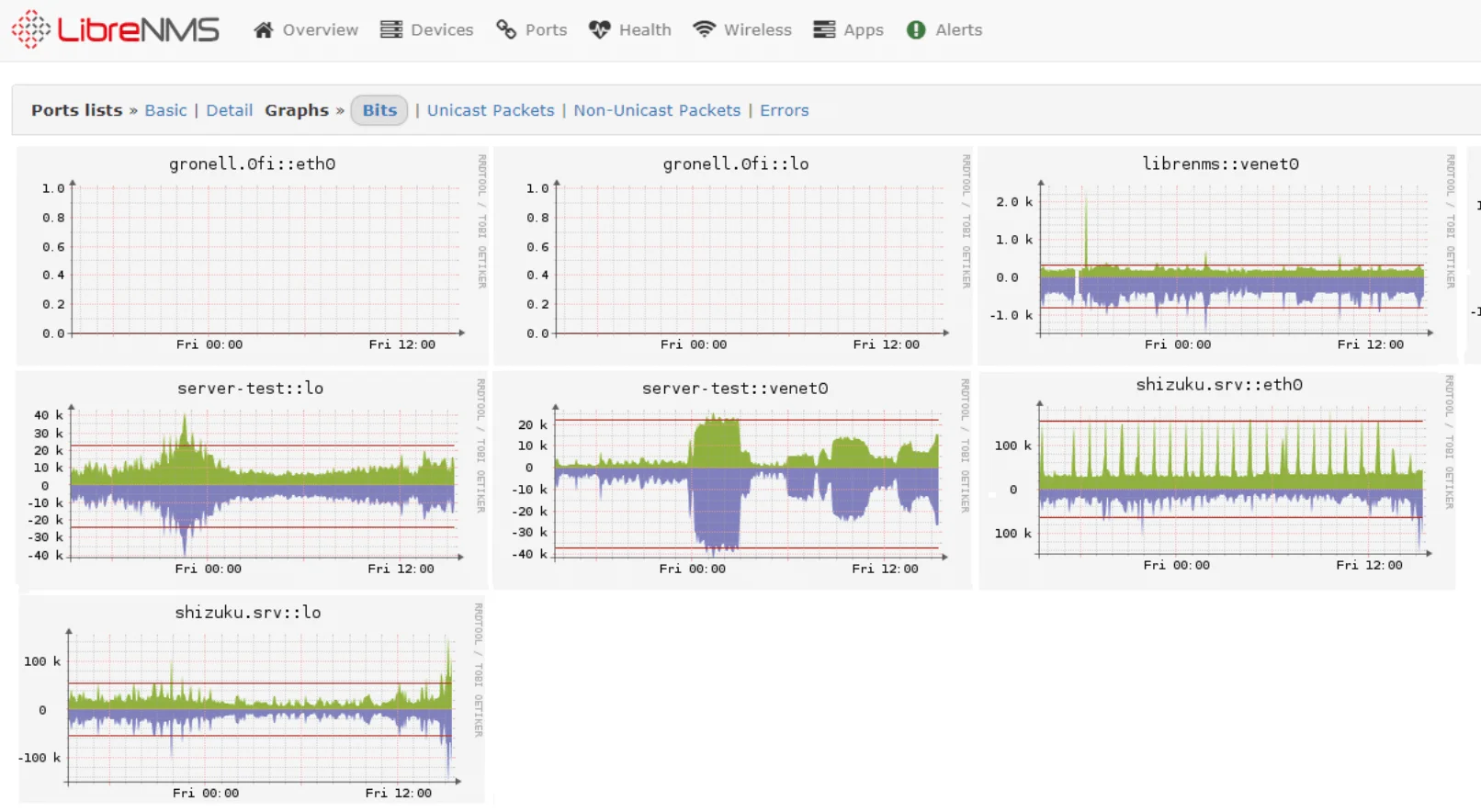
Key Features
- Automatic discovery
- Customizable alerting
- API access
- Billing system
- Automatic update
- Distributed polling
- Android and iOS app
- Extensive device support
- Mobile friendly Web UI
- Unix Agent
Pros
- Graphing
Helpful Community
Cons
- High memory usages
- Fewer enterprise-grade features
Pricing
LibreNMS is completely free and open-source. There are no licensing fees or costs associated with using the platform
Observium
Observium is a network monitoring and management platform offering real-time insights into network health and performance. With automated device and service discovery, it collects performance metrics and issues alerts when problems arise. Its user-friendly web interface provides real-time and historical data, focusing on quick issue identification and resolution.
Observium supports a wide array of devices, platforms, and operating systems, making it a versatile choice for network administrators. Developed and maintained by experienced professionals, Observium stands out as a platform designed for and by its users.
The system automatically generates a network map, a feature available in the free Community edition. To access automated monitoring with alerts, upgrading to one of the paid editions is necessary.
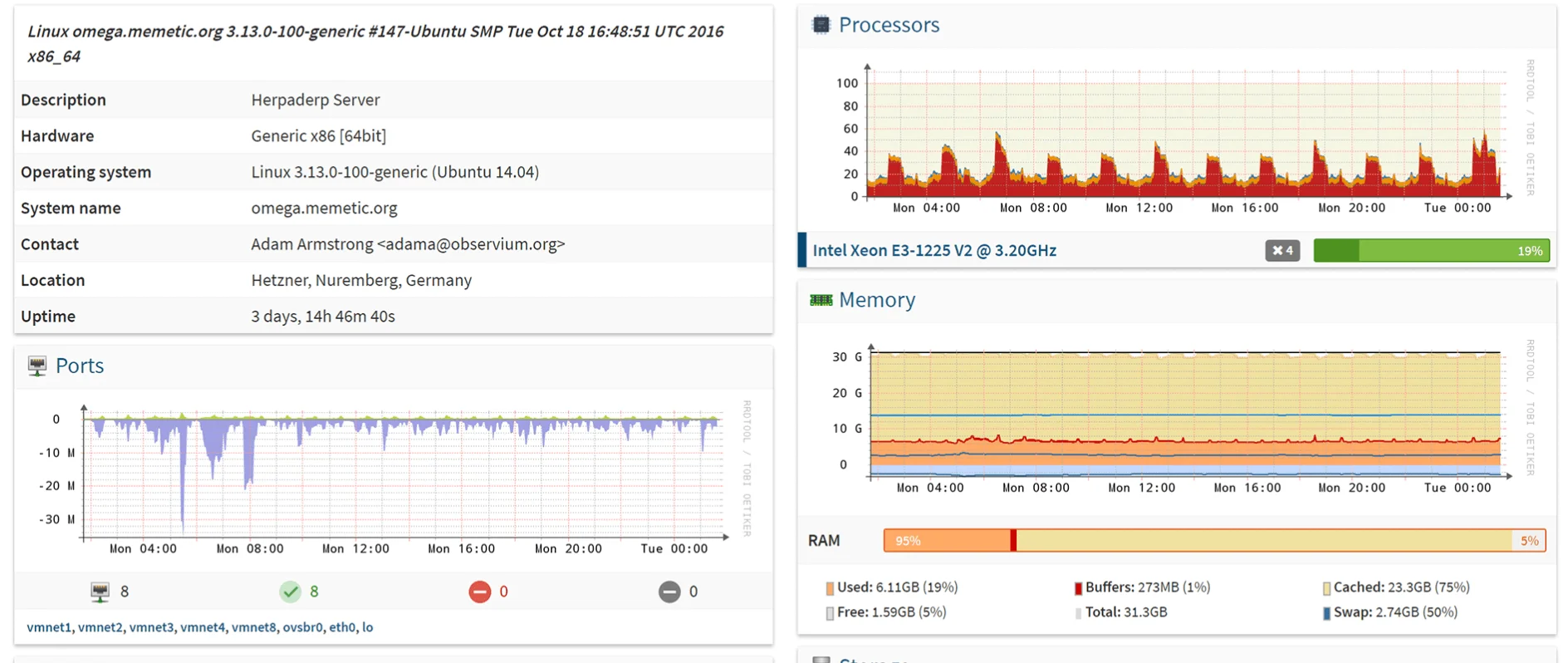
Key Features
- Extensive Device Support
- Traffic Accounting
- External Integration
- Threshold Alerting
- Bypass Round-Robin Restrictions
- Inventory and Mapping with Live Monitoring
Pros
Cons
- Documentation needs to be more clarified
- Notification alert message templates need to be simplified
- Resource-Intensive
Pricing
Grafana Advanced: Starts at $299 per user per month
Pandora FMS Solutions
Pandora FMS empowers you to identify all your network devices and visually represent their topology on maps, interconnecting interfaces, and providing a detailed network structure. Take it a step further by integrating device management with comprehensive network observability.
It is an agentless and agent-based technique to oversee the well-being of IT infrastructure, covering aspects like networks, servers, applications, databases, and beyond. This flexible solution caters to both on-premise and cloud deployment preferences.
Key Features
- Advanced Availability Reports
- NetFlow Integration
- Cross-Platform Monitoring
- Automated Network Mapping
- Configuration Change Detection
- Historical Graphs
- Auto-Discovery
- High Availability Support
Pros
- Full Stack Monitoring
- Monitoring of Network Devices with Traffic Analysis
- Advanced Historical Analysis Functionality
- Flexible and easy configuration
- Multi-platform
- Design in PERL, CCS, and HTML5
Cons
- Feature limitation in the free version
- The configuration process is complex
- No patch management
SolarWinds
SolarWinds stands out as a highly scalable application performance management (APM) and metrics platform designed to grow alongside your organization seamlessly. This zero-configuration APM boasts an array of features, including distributed tracing, comprehensive monitoring of hosts and IT infrastructure, the flexibility of custom metrics, and seamless integration with numerous third-party tools. All these components seamlessly contribute to a unified dashboarding, analytics, and alerting system, providing a comprehensive and holistic approach to application performance monitoring.
It offers you the features of creating a dashboard and visualizing your data. You can easily manipulate individual charts by dragging them around and adjusting their resize corners on a grid-based dashboard.
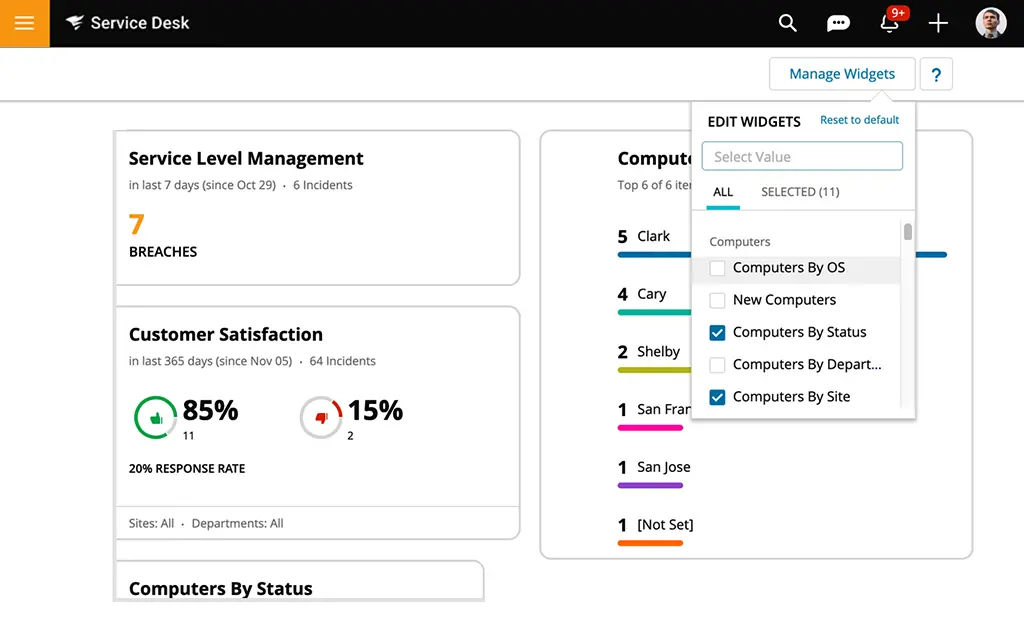
Pros
- Review Events to find out what is going on in your environment.
- Overview of syslogs or SNMP traps.
- Get alerts about issues in your environment.
- Generate reports to present the status of the monitored environment.
- Review Performance Analysis dashboards, also known as PerfStack™.
- View monitored objects on Intelligent Maps in the SolarWinds Platform Web Console
Cons
- Configuring and scripting some of the advanced features can be confusing
- Limited 3rd party compatibility
- Difficulty in modifying thresholds
- Confusing UI
- A very complex interface for network mapping feature
- Dashboard delays to show the current status of Nodes/Service
- The caching of web console requests operates at a relatively slow pace
Wrapping Up
Choosing the best Zabbix alternatives requires a thorough assessment of your unique requirements and how well they match the features provided by different monitoring solutions.
After conducting thorough research and rigorous testing, UptimeMonster has proven itself as the premier substitute for Zabbix. It encompasses all the vital features essential for smooth project management, presenting a cost-effective solution that is especially advantageous for startups and small teams.
